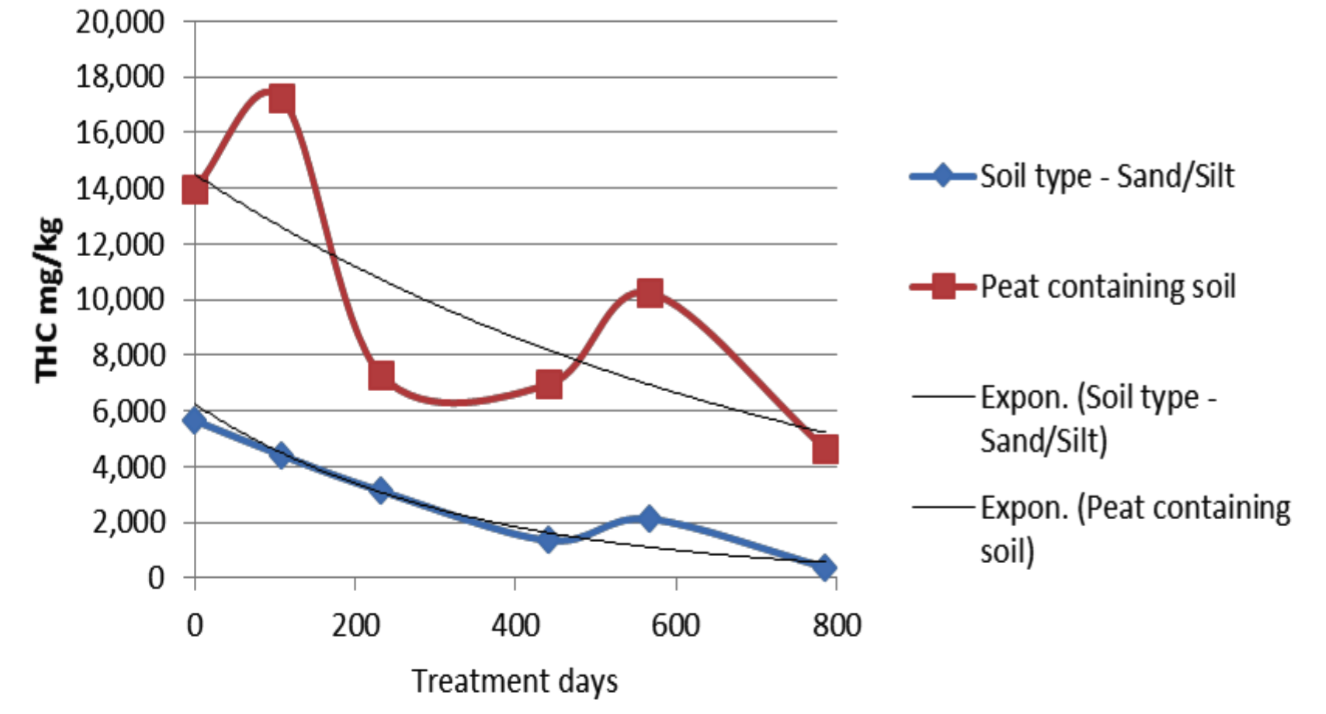Cleaning polluted soils left behind by oil and petroleum AST and underground storage tank (UST) sites is costly for land owners because it requires excavation, dumping and replacing the polluted soil. Due to urbanization, industrial areas are increasingly converted into residential use and the traditional ex-situ cleaning solutions are not sustainable.
Despite the polluted site was abandoned more than 20 years ago before the EKOGRID remediation project started, the pollution level was still very high as the pace of the natural bioremediation process is very slow.
The discovered pollutants consisted of C10-C21 fractions (e.g. diesel) and some heavier fractions such as C21-C40, with highest concentrations of nearly 100,000 mg/kg.
The soil at the site consisted of fine sand and silt with some sporadic layers of peat with thickness of 10-50 cm at the depth of one meter below the surface of the earth. Ground water level was approximately at 2.5 meters below the surface of the earth. Total volume of polluted soil was estimated to be 15,000 cubic meters.
Carbon steel rods with a diameter 12mm and length of 4 meters were used as electrodes immersed into the soil. The electrode rods were installed in drill holes of 50 mm in diameter due to frozen soil. A total of 149 rods were installed 5 m apart into a grid formation.
The condition of the site was analyzed during the installation with 150 Petroflag field analyses and 14 laboratory analyses. During the remediation period, intermediate control laboratory analyses were made from 18 sample points at different depths at Juwe and FGS laboratories.


At the completion of the EKOGRID electro kinetic oxidation remediation process, the soil clean up effect was clearly demonstrated already after a remediation process two years. Only a small portion of a peat layer with a volume of 1,500 m3 finally required a physical replacement due to an elevated HC content.
A significant cost saving potential was estimated after 90% of the polluted soil was cleaned up in the place using the EKOGRID in-situ remediation method.
Reducing the volume of polluted soil from 15,000 m3 to 1,500 m3 corresponds to a potential cost saving of EUR 1 million, when assuming a waste soil admission cost of EUR 25/ton, tax on waste of EUR 25/ton, and a cost of clean replacement soil of EUR 5/m3.
Additionally, the 90% reduction in the volume of polluted soil corresponds to 1,000 fewer truckloads of transported soil, which greatly reduces disturbances to the environment and inhabitants!
CASES
CASES